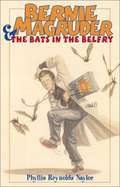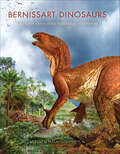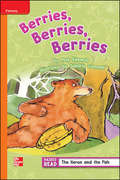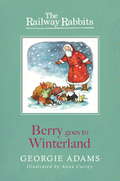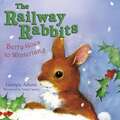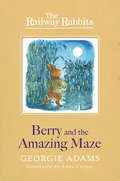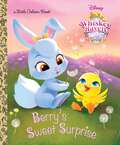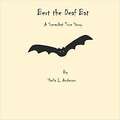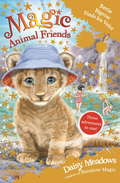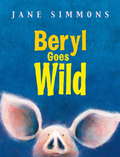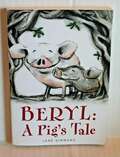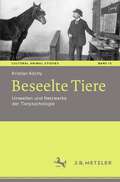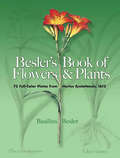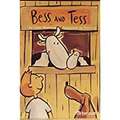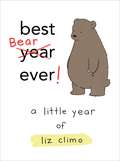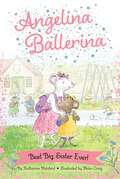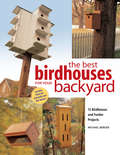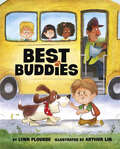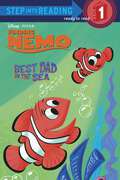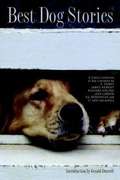- Table View
- List View
Bernie Magruder and the Bats in the Belfry
by Phyllis Reynolds NaylorMany residents of Middleburg, Indiana, are already going crazy from the ever-ringing church bells and now, after a bat is spotted in the hotel run by Bernie's family, they worry that the dangerous Indiana Aztec bat has finally arrived.
Bernissart Dinosaurs and Early Cretaceous Terrestrial Ecosystems (Life of the Past)
by Pascal GodefroitIn 1878, the first complete dinosaur skeleton was discovered in a coal mine in Bernissart, Belgium. Iguanodon, first described by Gideon Mantell on the basis of fragments discovered in England in 1824, was initially reconstructed as an iguana-like reptile or a heavily built, horned quadruped. However, the Bernissart skeleton changed all that. The animal was displayed in an upright posture similar to a kangaroo, and later with its tail off the ground like the dinosaur we know of today. Focusing on the Bernissant discoveries, this book presents the latest research on Iguanodon and other denizens of the Cretaceous ecosystems of Europe, Asia, and Africa. Pascal Godefroit and contributors consider the Bernissart locality itself and the new research programs that are underway there. The book also presents a systematic revision of Iguanodon; new material from Spain, Romania, China, and Kazakhstan; studies of other Early Cretaceous terrestrial ecosystems; and examinations of Cretaceous vertebrate faunas.
Berries, Berries, Berries (Reading Wonders #Approaching Level, Grade 3)
by Sandra Cammell May KennedyNIMAC-sourced textbook
Berry Goes to Winterland: Book 2
by Georgie AdamsSnow has come to the Ripple River Valley! But when Berry and Wisher go exploring, a mix-up with Father Christmas's bag of toys brings them to Fairweather's Farm Park and makes them a part of the Christmas celebrations. Can they find their way home safely?Heartwarming and hilarious, with Anna Currey's charming illustrations, this is a brilliant animal adventure series from a bestselling children's author.
Berry Goes to Winterland: Book 2 (Railway Rabbits #2)
by Georgie AdamsSnow has come to the Ripple River Valley! But when Berry and Wisher go exploring, a mix-up with Father Christmas's bag of toys brings them to Fairweather's Farm Park and makes them a part of the Christmas celebrations. Can they find their way home safely?Heartwarming and hilarious, with Anna Currey's charming illustrations, this is a brilliant animal adventure series from a bestselling children's author.
Berry Goes to Winterland: Book 2 (Railway Rabbits #2)
by Georgie AdamsSnow has come to the Ripple River Valley! But when Berry and Wisher go exploring, a mix-up with Father Christmas's bag of toys brings them to Fairweather's Farm Park and makes them a part of the Christmas celebrations. Can they find their way home safely?Heartwarming and hilarious, this is a brilliant animal adventure series from a bestselling children's author.Read by Kate O'Sullivan(P)2004 Orion Publishing Group.Ltd
Berry and the Amazing Maze: Book 12
by Georgie AdamsMeet the Railway Rabbits! Join the irrepressible Longears family as they get in and out of scrapes, meet new friends, and perform daring rescues. But Burdock the buzzard and the terrifying Red Dragon, are always on the lookout for naughty rabbits who stray too far from home...A field of ripe sweetcorn is fun to explore, until Berry gets lost in the maze and is chased by a terrifying harvester! Heartwarming, hilarious, with Anna Currey's charming illustrations, this is a brilliant new animal adventure series from a best selling children's author.
Berry and the Amazing Maze: Book 12 (Railway Rabbits #12)
by Georgie AdamsMeet the Railway Rabbits! Join the irrepressible Longears family as they get in and out of scrapes, meet new friends, and perform daring rescues. But Burdock the buzzard and the terrifying Red Dragon, are always on the lookout for naughty rabbits who stray too far from home...A field of ripe sweetcorn is fun to explore, until Berry gets lost in the maze and is chased by a terrifying harvester! Heartwarming, hilarious, with Anna Currey's charming illustrations, this is a brilliant new animal adventure series from a best selling children's author.
Berry's Sweet Surprise (Little Golden Book)
by Apple JordanBerry, Snow White's adorable bunny, loves springtime. There's lots of fruit to eat and cute baby animals to meet—including a sweet duckling! Children ages 2 to 5 who love Disney Palace Pets and the Disney princesses will love this original Little Golden Book. It makes a perfect Easter gift!
Bert the Deaf Bat
by Shelia L. AndersonOnce again Shelia L. Anderson weaves a tale of a wayward animal: a bat! This “somewhat true” story is hilarious, as well as instructional. <p><p> Bert, our hero, flies, or stumbles, into a house of humans, and pandemonium ensues! And horror of horrors, he loses his hearing! A bat disaster! Included among the elements of a really funny story are wonderful “bat facts” and loads of pictures that are sure to pique the interest of children and adults alike. Whatever you thought about bats before, Bert the bat will definitely find a spot in your heart! <p><p> Anderson combines science with fiction and adds some fun and invents another genre: "fun science fiction!" What an adventure!
Bertie Bigroar Finds his Voice: Three adventures in one! (Magic Animal Friends #8)
by Daisy MeadowsAn enchanting series full of adorable animals, magic and friendship - from the creator of RAINBOW MAGIC, the UK's bestselling series for girls aged 5-7.Welcome to a magical world where animals talk and play - just like you and me!Best friends Jess and Lily love all animals. But when they follow a mysterious golden cat into Friendship Forest - a place where animals live in tiny cottages and sip dandelion tea at the Toadstool Cafe - their animal friends suddenly become much more magical!Join Lily and Jess as they make a very special friend - Bertie Bigroar the lion cub! Little Bertie has a big heart, but can be shy sometimes. Can the girls help Bertie be brave like his big brothers, and together defeat the wicked witch Grizelda?
Bertie's Gift: a heartwarming tale to fall in love with this Christmas
by Hannah CoatesMeet Bertie. He's an excitable little scamp. 'You will adore this gorgeous book' - MILLY JOHNSON'Charming and touching' - KATIE FFORDE'The perfect feel-good read!' - MANDY BAGGOTThe heartwarming tale of how Bertie saves a family at Christmas is perfect for fans of A Pug Like Percy: the ideal read for curling up with in front of the fire. Bertie is alone, devastated after his beloved sister and fellow beagle Molly is adopted, leaving him behind. When Bertie is taken in by the Green family, it seems he's finally found a place to call home...Yet Bertie swiftly realises that the kind and loving Green family is in crisis. After a tragedy two years ago, they've never recovered - and as Christmas approaches, grief is pulling them apart. Never has a four-legged friend been more in need - and brave, warm-hearted Bertie must rise to the challenge. Can he find Molly and bring the Green family back together again...all in time for Christmas?
Bertie's Gift: the heartwarming story of how the little dog with the biggest heart saves Christmas
by Hannah CoatesThe heartwarming story of how the little dog with the biggest heart saves Christmas.*****'Charming, touching - an absolute gift of a book!' Katie Fforde'If you love animals, you will adore this gorgeous book.' Milly JohnsonBertie is all alone: his beloved sister and fellow beagle Molly has been adopted, leaving him behind. But when Bertie is taken in by the Green family, it seems he's finally found a place to call home. Yet he swiftly realises that the kind and loving Green family is in crisis. After a tragedy two years ago, they've never recovered - and as Christmas approaches, grief is pulling them apart. Never has a four-legged friend been more in need - and brave, warm-hearted Bertie must rise to the challenge. Can he find Molly and bring the Green family back together again...all in time for Christmas Day?
Beryl Goes Wild
by Jane SimmonsWhen Beryl escapes from the lorry taking her to the abattoir, she finds a new and rather frightening world. A world of wild pigs, where she makes a friend called Amber, meets the Sisterhood of the Mystic Boar and goes on an epic journey - but will she find a home?
Beseelte Tiere: Umwelten und Netzwerke der Tierpsychologie (Cultural Animal Studies #13)
by Kristian KöchyDie Tierpsychologie ist zu Beginn des 20. Jahrhunderts eine prominente Forschungsrichtung zwischen Biologie, Psychologie und Philosophie. Sie fragt nach psychischen Vermögen von Tieren. In essayhaften Studien zu namhaften Protagonisten werden im Buch Forschungskontexte der Tierpsychologie vorgestellt. Die ausgewählten Positionen verstehen menschliche Wahrnehmung ebenso gestalthaft wie die Forschungsgegenstände, die Tiere in ihren Umwelten. Das Buch untersucht Beziehungen von Philosophie und Wissenschaft, skizziert aber zudem eine Philosophie der Tierforschung, die die Interaktion von menschlichen und tierlichen Subjekten anerkennt.
Besler's Book of Flowers and Plants: 73 Full-Color Plates from Hortus Eystettensis, 1613 (Dover Pictorial Archive)
by Basilius BeslerWhen Prince Bishop von Gemmingen founded Germany's famous garden at Eichstätt in the early seventeenth century, its lush beauty was recorded in magnificent copperplate engravings. Later published as the Hortus Eystettensis by Basilius Besler, the colorful plates expertly mirrored the diversity of the celebrated garden, making it a great treasure of botanical literature.This collection gathers the finest illustrations from that historic study. Meticulously reproduced and carefully identified, here are the rare plants, flowers, and trees that once flourished throughout the grounds of Eichstätt's palace gardens. A thriving source of design ideas and horticultural information, this glorious gallery of art will endlessly delight artists, designers, and botanical enthusiasts.
Bess and Tess
by Jane MannersMark makes new friends in the farm when people come to see his granddad's cows.
Best Bear Ever!: A Little Year of Liz Climo
by Liz ClimoCome spend some time in Liz Climo's world! The artist and popular blogger returns with another collection of her comics--this time following the seasons with her most beloved characters. Fans love Liz Climo's charmingly funny animal kingdom, which was first featured in The Little World of Liz Climo and Lobster is the Best Medicine.Best Bear Ever! follows Bear and Rabbit, along with their other friends (including Otter, Sloth, Skunk, and Turtle), to commemorate special days throughout the year, while also embarking on fun adventures to celebrate the seasons. When you have good pals like these, any time of year can be the BEST EVER!
Best Big Sister Ever! (Angelina Ballerina)
by Katharine HolabirdAngelina Ballerina and her friends put on a welcome ballet for Angelina&’s little sister and other new students in this sweet chapter book featuring an all-new, original Angelina Ballerina story and black-and-white illustrations throughout!Angelina Ballerina&’s little sister, Polly, is starting school for the first time. Angelina wants to make her and the other mouselings feel welcome, so she puts on a special ballet show with her friends! This charming chapter book is perfect for Angelina Ballerina fans beginning to read on their own or for reading aloud! © 2023 Helen Craig Ltd and Katharine Holabird. The Angelina Ballerina name and character and the dancing Angelina logo are trademarks of HIT Entertainment Limited, Katharine Holabird, and Helen Craig.
Best Birdhouses for Your Backyard
by Michael BergerBuild birdhouses that attract the birds you want!Most birdhouse books are overly complex, with intricate projects that take hours of work. Are they attractive? Sure. But useful? Depends.The Best Birdhouses for Your Backyard puts birds' needs first! You'll find more than a dozen easy-to-build projects that include: • Information about the bird each house attracts, including vital statistics • Guidelines for strategic placement of your birdhouses • Considerations for making sure your birds are safe and comfortable • Special tips for dealing with raccoons and other predators • Complete materials list • Advice on hardware and supplies • Detailed step-by-step instructions • Special woodworking tipsYou'll also find guidelines for choosing woods that can outlast the elements, charts with tool descriptions and comparisons, resource lists, construction techniques, finishing advice and more. You'll have fun in the shop while providing safe, attractive homes for your favorite feathered friends.
Best Buddies
by Lynn PlourdeBest Buddies introduces a boy-and-dog duo who are BEST FRIENDS and who do EVERYTHING together! So how will they manage being apart when the boy heads to school for the first time? Find out how a clever boy with Down syndrome and his loyal pet find the perfect way to feel close even when they can’t be together. A sweet, inspiring story that will ease concerns about the first day of school and other big changes for kids.
Best Dad In the Sea (Step into Reading)
by RH DisneyCelebrate Father's Day with Nemo the clownfish and his father, Marlin in this Step into Reading Step 1 leveled reader! Beginning readers can relive the magic of Disney/Pixar Finding Nemo! Nemo and his dad are very different, but they make a fish-tastic pair! Step 1 readers feature big type and easy words. Rhymes and rhythmic text paired with picture clues help children decode the story. For children who know the alphabet and are eager to begin reading on their own.
Best Day Ever!
by Marilyn SingerA sweet dog-loves-kid/kid-loves-dog story, in which the kid uses a wheelchair, from an award-winning children&’s poet and talented debut illustrator.This playful puppy thinks she&’s having the best day ever! She's so happy to be out with her friend, she doesn't even realize that she's being a little naughty. But then he scolds her, and suddenly—Worst. Day. Ever. Will puppy be able to make amends and turn their day back around? Join an exuberant, boundary-pushing pup and her exasperated boy in this reassuring story about unconditional love and the challenges of trying to always be on your best behavior.
Best Dog Stories
by Lesley O'MaraA selection of favorite dog stories, including selections by James Herriot, Jack London, Rudyard Kipling, Albert Payson Terhune, Virginia Woolf, P. G. Wodehouse, G. K. Chesterton and more.
